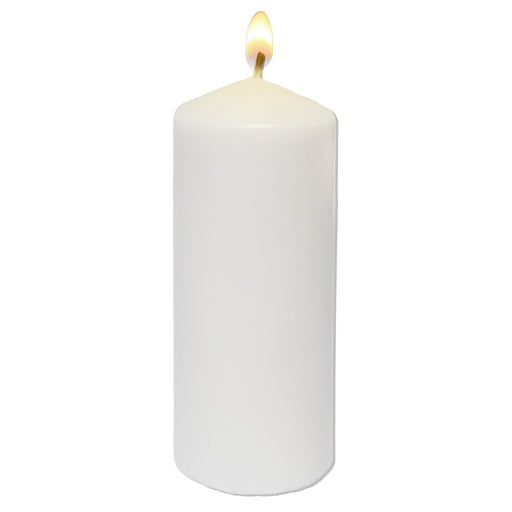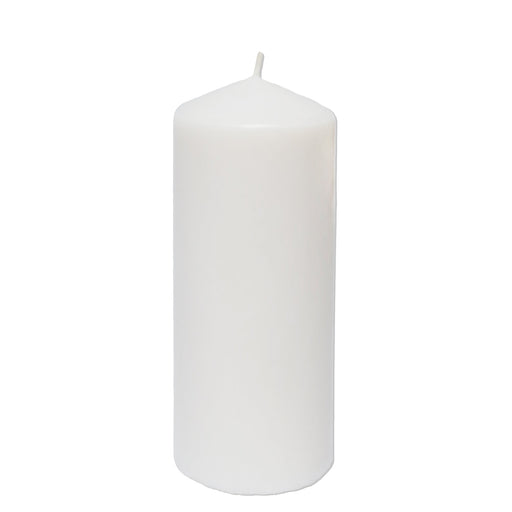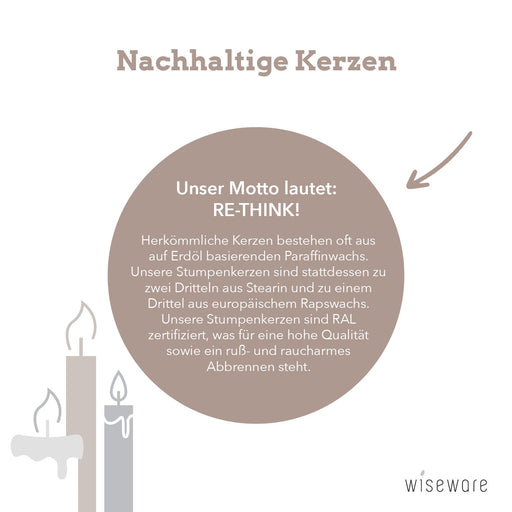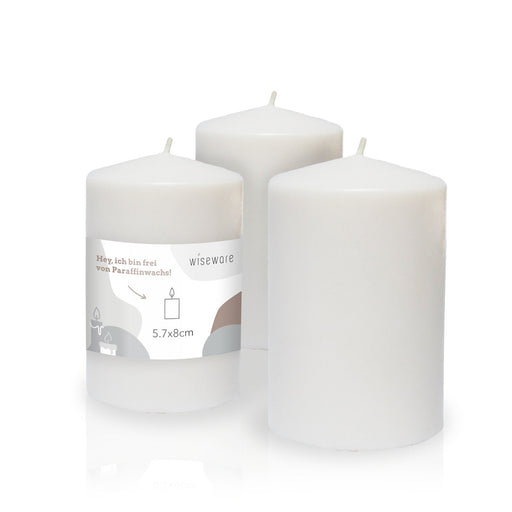Support:
+49 (0) 89 24418362

Beeswax candles
DIY - Make sustainable candles yourself
Do you also value sustainability in your household? Have you ever thought about how environmentally friendly the candles you burn during Advent are? Most commercially available candles are made from palm oil, paraffin and beeswax. Paraffin is produced during the production of lubricating oil. The climate balance of petroleum products is always negative. Even the popular tea lights are not environmentally friendly, because the aluminum bowl produces unnecessary waste. If you want to protect the environment, you don't have to do without the cozy candlelight. The solution are DIY candles, which you can make yourself at home with little effort.What are the commercially available candles made of?
The candles that you can buy in stores consist of 75 percent paraffin. Paraffin is a product from the "climate killer" petroleum and is harmful to the environment in the long term. But candles made from palm oil are also harmful to the environment. Palm oil is also known as stearin. It is true that stearin is produced from renewable raw materials and is biodegradable. But the problem: Huge plantations are needed for palm oil, for which large parts of the tropical rainforest are cut down. Compared to paraffin candles, however, stearin candles have the advantage that they burn longer and produce significantly less soot. Nevertheless, these candles are not recommended if you want to make an active contribution to environmental protection. Organic candles are a sensible alternative, because only fats and oils from renewable raw materials are used in their production.Most candles available in stores are made from paraffin. This raw material not only has a negative environmental balance. It can even damage your health in the long run. When burning paraffin candles, numerous substances that are harmful to health are released, including alkanes, alkenes, ketones, toluene and benzene. Some candles even contain lead. This additive is intended to ensure that the candles burn longer and the wick is stabilized. According to a test by Stiftung Warentest, some candles even contain nickel. Nickel and lead are two hazardous substances. Although the concentration in the candles is negligible and not dangerous for healthy people, sustainable candles are definitely a better choice.
But how are candles actually made? The manufacturing process largely determines the quality of the candle and how long it burns. Inexpensive candles are usually manufactured using the so-called powder pressing process. Paraffin granules are then pressed with a wick. In the so-called casting process, on the other hand, the wax, i.e. stearin or beeswax, is first heated and then shaped into the desired shape. These cast candles are heavier and burn longer. The oldest process for making candles is candle making. In this process, the wick is drawn through a liquid wax bath until the desired thickness is achieved. So this is a very complex and expensive process. The advantage, however, is that the candle burns for a very long time and evenly. When buying your candles, always pay attention to how heavy they are, because that says a lot about their high quality. If you want to be sure when buying a candle that it is a high-quality model, continue to pay attention to the RAL quality mark. Candles that are equipped with this quality mark do not drip and are low in soot and smoke. They also contain strictly controlled raw materials and should therefore be your first choice. The slightly higher price for high-quality candles pays off twice: the good burning quality and the soot-free flame ensure lasting candle pleasure.
How can I make candles myself?
Making sustainable candles yourself is much easier than you think. Such ecological candles are also ideal as a gift idea. First, get all the supplies you need. Orange candles are made particularly quickly. They give off a wonderful scent; In addition, you probably have all the necessary ingredients at home. First, cut the orange in half and carefully scoop out the flesh. You should leave the middle stem as it will later serve as a wick. Now pour the vegetable oil (melted beeswax works as well) into the oranges. Make sure the center stem sticks out at least an inch. It is best to place the orange candle on a saucer to burn it off, as the orange peel is sure to let some of the oil through.Another popular do-it-yourself candle is the honeycomb candle . You need honeycomb sheets and a cotton wick as well as some beeswax for the production. First, dip the wick in the liquid beeswax and set it aside to dry. Now you cut the wick and honeycomb plate to the desired size. The honeycomb panel is now wrapped around the wick millimeter by millimeter. You can now dip the finished plate in liquid beeswax again. This softens the distinctive honeycomb structure somewhat.
The coconut oil candle also spreads a nice scent. For the production you need the same amount of beeswax and coconut oil . Also choose a nice container for your candle. First, carefully heat the beeswax. Now cut the wick to the desired length; it should be slightly longer than your vessel. Dip the oil candle wick into the heated wax and set it on a piece of newspaper to dry. Now you also heat the coconut oil and mix it carefully with the beeswax. Now fill this mixture into your vessel until the bottom is well covered. Now put the wick in and fill up with the remaining mixture. The wick should stick out about an inch at the top. You then have to let the finished candle dry for at least a day.
Last but not least, the oil candle should not go unmentioned. You will need floating wicks with a cork float , a glass jar , and regular vegetable oil . Sunflower or olive oil are particularly good. First fill the oil in your glass and carefully place the floating wick with the cork float on the oil. Your homemade organic candle is ready; it can not get easier. So that your candle not only looks beautiful, but also smells pleasant, you can add various spices or flowers to the oil. Vegetable oil has the advantage that it burns without leaving any residue or soot.
Of course you can also buy sustainable candles. However, you have to be careful here. Sustainable candles are not actually in everything that says organic candles on the label . Organic candles are made from beeswax, rapeseed or soy wax. Although beeswax candles are the most expensive variant, they convince with a pleasant scent that fills the whole room. Soy wax candles are also more expensive than paraffin candles, for example. These models, which are often hand-cast, are ideal as gifts. Candles made from rapeseed oil are still more of a niche product. This variant is also rather expensive, but very sustainable. Another sensible alternative: If you have several candles at home that have already been used, do not throw away the pillars. They are ideal for pouring candles yourself. Do you prefer tea lights? Then it is best to decide on tealight glasses that you can fill with tealights without a cover. Such eco-tea lights have the significant advantage that they do not require any aluminum at all.
Autumn trend: turning candles DIY
Would you like to make your own atmospheric winter decoration? Then you can easily roll your own candles. It is best to use beeswax candles for this, because turning the candles works best with these ecologically valuable candles. You need the following ingredients:- Candles of your choice
- a tall vase or jug
- a rolling pin
- some hot water
- a piece of parchment paper
Start by pouring the warm water into the vase or pitcher and placing the candle upside down. Now you wait about ten minutes until the candle has softened. But the water must not boil either, because then the candles would melt. When the candle is soft, take your rolling pin and roll it out. Now take the unrolled candle in both hands and turn it up so that a swirl appears. How often and how hard you turn the candle is up to your own preferences. Now you only have to let the candles cool down and then you can use them as an atmospheric decoration.
Do you not want to roll candles or make them yourself in any other way and do you not want to set up commercially available candles? Then there is another worthwhile alternative: Energy-saving LED candles are becoming increasingly popular. You can usually control it with a remote control. With some models you can even activate a timer. Then the candles go on at the same time every day. Another significant advantage: Unlike all candles, the LED candles are absolutely safe. You can also leave them unattended for a few minutes and don't have to worry about a fire. The disadvantage: Real candlelight is imitated with the LED candles, but the same cozy atmosphere as with a real fire is usually not achieved.
Frequently asked questions and answers
How many candles are burned in Germany?According to ECA, the European Candle Association, Germany is more in the middle when it comes to candle consumption. Every German burns an average of 2.2 kilograms of candles a year; most of it, of course, in the Advent and pre-Christmas period. The absolute leaders in candle consumption are the Scandinavian countries, because the days are particularly short here.
What are candles made of?
About three quarters of all candles produced in Germany are made from paraffin. Stearin, which is made from vegetable and animal fats, is also a popular raw material for candles. If you are looking for one of the most natural substances for making candles, you should choose beeswax. However, these candles are also the most expensive.
What alternatives to traditional candles are there?
The oil candle and the coconut oil candle are just two popular alternatives to traditional candles. The orange candle and the honeycomb candle are also popular and easy to make yourself. You only need a few materials; You may even have many of them at home. You don't have to be skilled with your hands either, because you can make your own candles in just a few minutes.
Which candles burn best?
How long a candle burns depends on both the material used and the manufacturing process. Stearin candles are known to burn for a particularly long time. In addition, they do not soot or drip and are therefore one of the most popular types of candles. Beeswax candles also have a relatively long burn time. You can remember: the heavier a candle is, the higher the quality of the material used and the longer the burning time.
Which wax is best for candles?
The first choice for your DIY candles should definitely be beeswax, preferably from an organic apiary. You can recognize beeswax candles by their characteristic honeycomb structure and the beautiful golden yellow colour. However, classic bee candles have a market share of just 0.5 percent, so they are not easy to come by in stores.
Conclusion: As you can see, you don't have to do without the cozy candlelight during the Advent season. You can easily make your own sustainable candles or you can simply choose high-quality ecological models. It doesn't matter whether you decide on high-quality organic candles that you have bought or on the self-made model: With the candlelight, the dark season becomes much cosier. Reason enough, then, to decorate your home with as many of the candles as possible.
Sources:
- https://www.ecowoman.de/freizeit/diy/diy-gift-idee-bio-kerzen-selber-machen-6188
- https://www.quarks.de/umwelt/wie-nachhaltig-koennen-kerzen-sein/
- https://www.br.de/radio/bayern1/inhalt/experten-tipps/umweltkommissar/kerze-wachs-palmoel-stearin-russ-umweltkommissar-100.html
- https://doitbutdoitnow.de/2020/10/diy-herbsttrend-candle-turning/
- https://utopia.de/ratgeber/einkaufsratgeber-kerzen/
-
Tea lights without aluminium, sustainable, made of white rapeseed wax, Ø 3.8 cm
Original price 9,90 €Original pricefrom 9,90 €8,32 €9,90 €Current price 9,90 €40 item | 0,25 € / itemOur white tea lights come in a pack of 40. The diameter of a candle is 3.8 cm and the height is 2.4 cm. The tea lights are made from 100% rapeseed ...
View full details -
Pillar candle Large candle (13 cm) white Ø 6 cm
Original price 3,99 €Original pricefrom 3,99 €3,35 €3,99 €Current price 3,99 €1 item | 3,99 € / itemThe 100% sustainable white candles (Ø 6 x 13 cm) are made from a mixture of stearin and rapeseed wax. The environmentally friendly pillar candles a...
View full details -
Pillar candle Candle small (9 cm) white Ø 6 cm
Original price 3,49 €Original price3,49 €2,93 €3,49 €Current price 3,49 €1 item | 3,49 € / itemThe 100% sustainable white candles (Ø 6 x 9 cm) are made from a mixture of stearin and rapeseed wax. The environmentally friendly pillar candles al...
View full details











